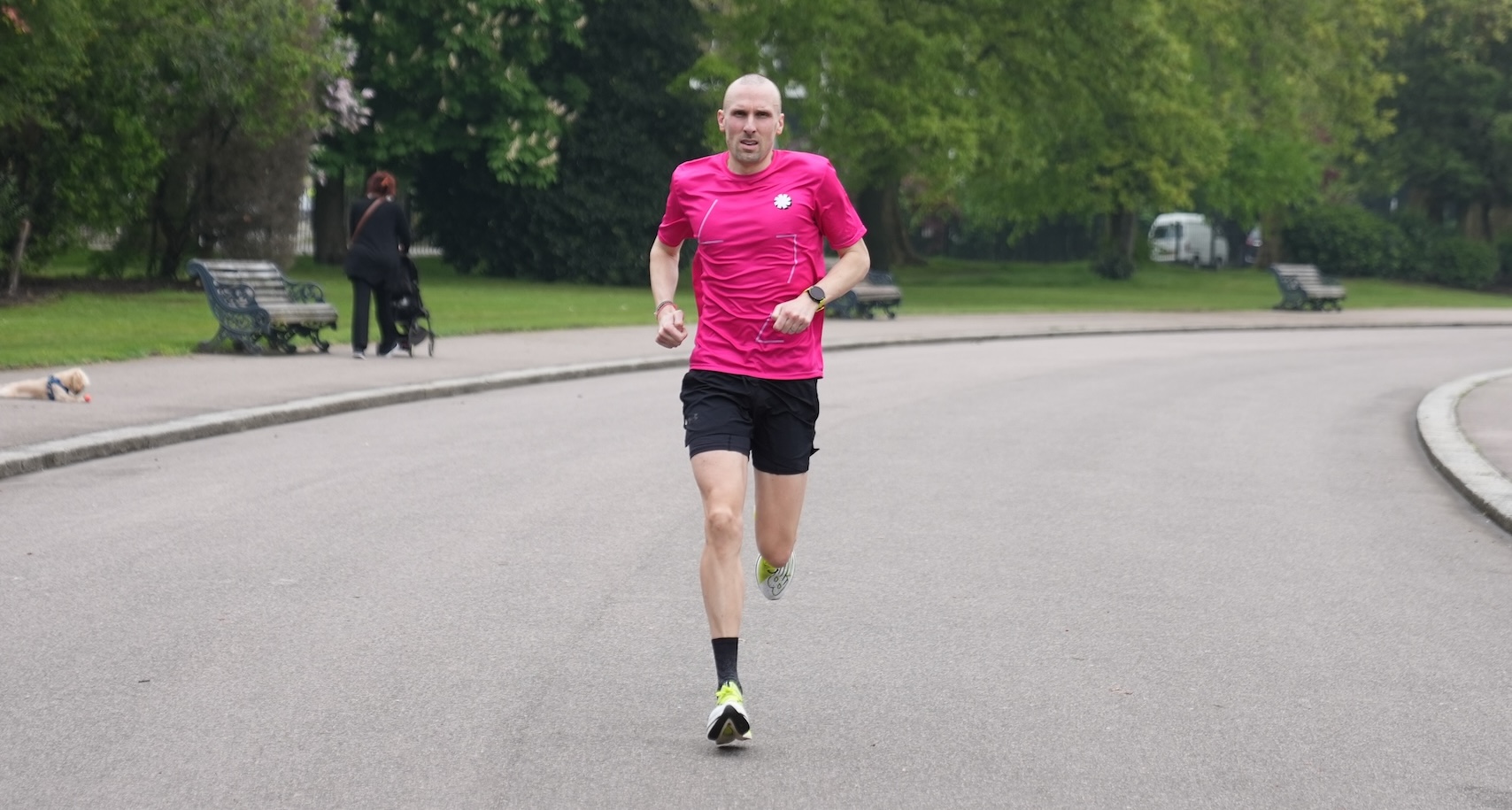Tempo Run vs Threshold Run: What’s the Difference?

What is the difference between tempo runs and threshold runs? And what are the benefits of tempo and threshold runs?
WHAT IS A TEMPO RUN?
A tempo run is a moderately fast run which you hold for a sustained time – usually 15 to 60 minutes. It should be a challenging effort, but a controlled one.
If an easy run has an RPE (rate of perceived effort) of 3-4 then a tempo run is 6-8.
Tempo runs are great because you can do them anywhere and they don’t need to be at a specific pace – it’s just you running harder than usual, but not as fast as if you were running an interval. They really help to improve endurance without being as demanding on the body as an interval session.
As an idea of the pace, it should be something that you could sustain for an hour or more.
WHAT IS A THRESHOLD RUN?
A threshold run is a comfortably hard effort, broken into shorter intervals (from 2-20 mins), that are run at a pace which is just below your lactate threshold.
Like tempo runs, the effort is challenging but controlled, with the RPE around 7-8.
Threshold runs are more complex than tempo runs because the pace you run is specific and individual (we’ve covered threshold runs in more detail here, if you want to know everything about threshold runs). The TL;DR is: muscles convert glycogen into energy to power us during a run, and lactate is produced as a waste byproduct. Our body can clear the lactate if we’re running slowly, but as we run faster or for longer, more lactate builds up until it passes a threshold where the body can no longer remove it quickly enough. You’ll know how this feels: it’s when your legs start to burn and get heavy and can no longer speed up.
The idea of a threshold run is to do reps just below your threshold, then take a short rest to clear more of the lactate, then go again. The intention is to improve the efficiency of your body removing lactate, and to shift your lactate threshold turn point, so you can run faster for longer.
WHY SHOULD YOU DO TEMPO AND THRESHOLD RUNS?
There are great benefits to both tempo and threshold runs, and they can work for all runners, training for all distances.
- They help you increase your cardio fitness and endurance by improving how your body uses oxygen and removes lactate
- They help to condition your body for longer sustained runs, which is great for race day
- For races like a marathon, tempos help you train running a challenging pace for extended periods, while thresholds help you to run a little faster and can hopefully give you a reserve of speed for the end of the race
- They improve your mental strength as you have to work at a hard pace for an extended amount of time
- The paces are quicker than easy, but not as fast as an interval, so many runners find they can tolerate and recover from tempo and threshold runs better than interval sessions
WHAT IS THE DIFFERENCE BETWEEN TEMPO AND THRESHOLD RUNS?
There are two main differences between tempo runs and threshold runs.
- Tempo runs are usually longer in duration than threshold runs
- Threshold runs are generally at a faster pace than tempo runs
A tempo run could be split into intervals (2-3 x 10-20 minutes), or could be continuous (15-60 mins). For most runners, it’ll be around your half marathon or marathon pace.
For threshold runs, you should aim for 20-40 minutes at threshold in a single session, split into a number of shorter reps. You should stay below 90% of your maximum heart rate, and your pace will be around 20-25 seconds per mile (10-15 seconds per km) faster than marathon pace.
GREAT EXAMPLES OF TEMPO RUNS
- 15 minutes easy, 30 minute tempo, 15 minutes easy
- 5 minutes easy, 2 x 20 minutes tempo with 2-5 minutes easy between, 5 minutes easy
- 5 minutes easy, 3 x 15 minute tempo (2-5 minutes easy in between), optionally increasing the pace slightly between each tempo block
- 5 minutes easy, 50 minutes tempo, 5 minutes easy
- A 30km long run: 10km easy, 2 x 30 minutes tempo with 5-10 minutes easy between, then easy pace until you reach 30km
GREAT EXAMPLES OF THRESHOLD RUNS
- 4-6 x 1 mile. Run each to your threshold level. Take a 1-2 minute rest or jog in between.
- 8-10 x 1km. Same as above. Another classic.
- 10 x 2 minutes. A good beginner threshold workout to learn the pace to aim for.
- 12-16 x 400m (or 6-8 x 800m). Run these efforts to your threshold pace, not like an all-out interval, so the aim is to keep them controlled. Take 1-2 minute rest between each rep.
- 3 x 3km. By run longer reps, your body gets more comfortable pushing beneath your lactate threshold for longer, which can be very helpful in races from 10km upwards. Take a two-minute jog or walk between reps.
HOW OFTEN SHOULD YOU DO TEMPO AND THRESHOLD WORKOUTS?
It’s common for runners to have one or two faster days of running per week, and on those days you may do tempo, threshold, intervals or fartlek runs. Aim for one threshold run a week, and then choose between the other faster sessions based on your coach or training app.
It’s always best to have rest days or easy days before and after harder sessions as these help you recover and adapt from the difficult days.
***
Do you do tempo and threshold runs as part of your training? And if you want to know more about different types of runs, then here’s every type of run explained!




























Running News
Ingebrigtsen Stars at World Athletics Indoor Championships 2025 – Plus All The Winners!
Sam Ruthe Is First 15-Year-Old To Run A Four-Minute Mile!
Eliud Kipchoge Will Run The 2025 Sydney Marathon!